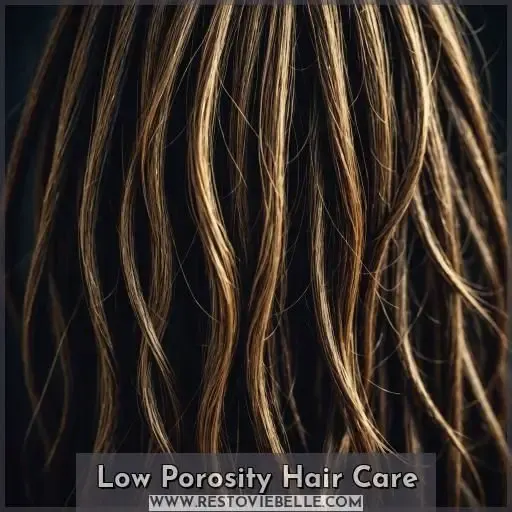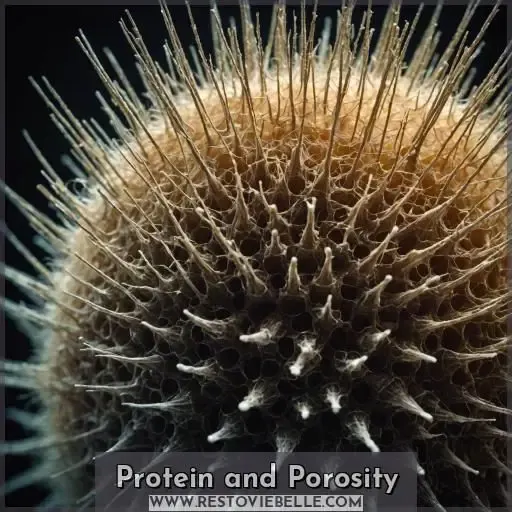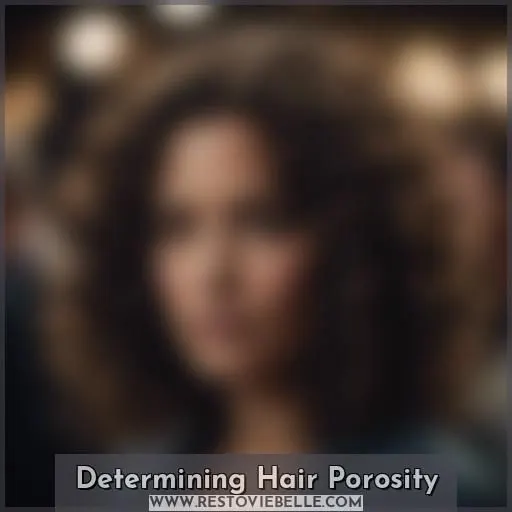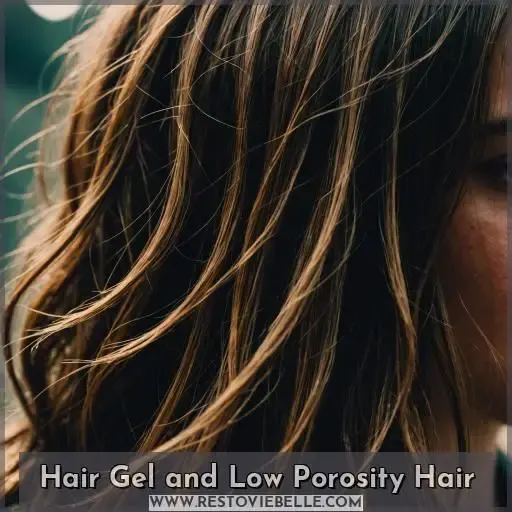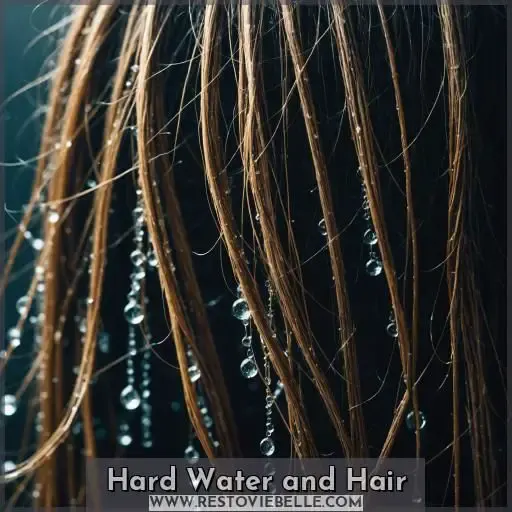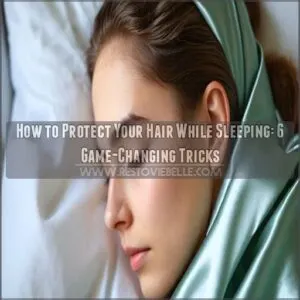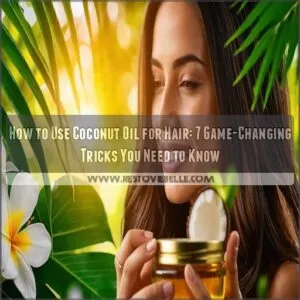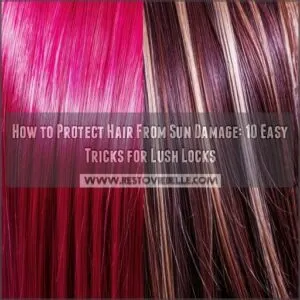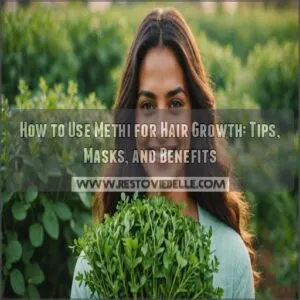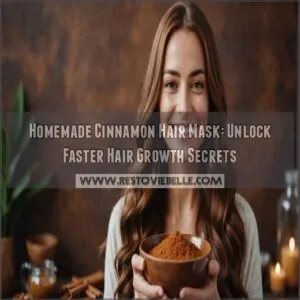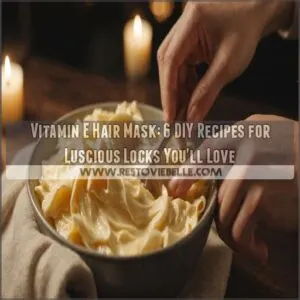This site is supported by our readers. We may earn a commission, at no cost to you, if you purchase through links.
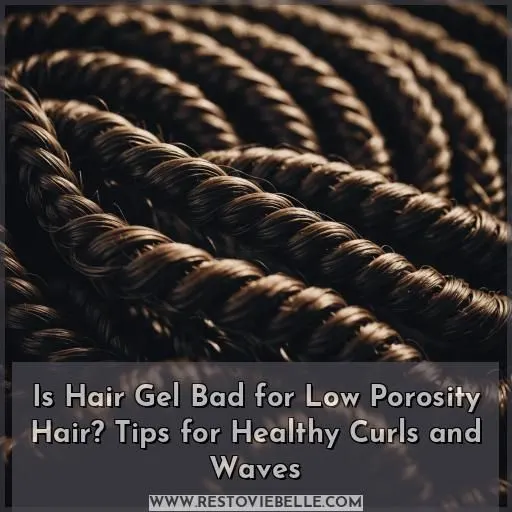 Hair gel can pose challenges for your low porosity strands.
Hair gel can pose challenges for your low porosity strands.
Most gels contain protein-rich ingredients that struggle to penetrate your tightly-bound cuticles, leading to buildup and dryness.
Opt for protein-free gel alternatives or natural options like flaxseed gel or aloe vera.
Incorporate humectants like glycerin to boost moisture.
Protective styling and minimizing heat exposure are also wise.
Maintaining the delicate equilibrium for your low porosity hair takes some finesse, but custom-designed techniques can yield healthy, hydrated curls and waves.
Table Of Contents
Key Takeaways
- Protein-rich hair gels can cause buildup and dryness in low-porosity hair due to the tightly bound cuticles that make it difficult for the protein to penetrate effectively.
- Opt for protein-free gel alternatives or natural options like flaxseed gel or aloe vera, and incorporate humectants like glycerin to boost moisture.
- Protective styling and minimizing heat exposure are also important for maintaining the delicate equilibrium required for healthy, hydrated low-porosity hair.
- Clarifying regularly to remove buildup, deep conditioning with heat, and using humectants like glycerin and honey can help improve moisture absorption and retention in low-porosity hair.
Is Hair Gel Bad for Low Porosity Hair?
No, hair gel is generally not bad for low porosity hair. Low porosity hair tends to have a harder time absorbing moisture, so using a lightweight, water-based hair gel can actually help hydrate and style low porosity hair without weighing it down.
Low Porosity Hair Care
You’ve got low porosity hair, making it a challenge to keep your curls and waves healthy.
It’s all about finding the right balance – too much moisture and your hair stays dry; too little and you’re left with limp, brittle strands.
The key is to clarify regularly, removing buildup that blocks moisture absorption.
Deep condition with heat to open up those cuticles for better hydration.
Use humectants like glycerin and honey to attract moisture.
Pre-poo before washing to nourish strands.
And don’t forget mid-week moisture boosts with a spritz or two of leave-in conditioner.
With patience and the right cocktail of cleansing, conditioning, and hydrating, you’ll have those luscious low-porosity locks thriving.
Protein and Porosity
Protein plays a pivotal role in hair health.
However, it can be a double-edged sword for those with low porosity hair.
While protein aids in strengthening and repairing high porosity hair, it can actually result in accumulation and dryness in low porosity strands. This is because the tightly sealed cuticles in low porosity hair make it challenging for protein to penetrate effectively.
Consequently, protein-rich products like conditioners can remain on the surface, weighing hair down and causing a brittle texture.
To address this, individuals with low porosity hair should choose formulas without protein.
They should also consider utilizing a clarifying treatment such as a crystal clarifying treatment to remove any product buildup. This will help maintain the delicate equilibrium that their hair requires.
Determining Hair Porosity
Determining your hair’s porosity is key to understanding how it absorbs and retains moisture.
There are a few simple tests you can do at home to figure out your porosity level.
The float test involves dropping a few strands of clean, dry hair into a glass of water. If the hair floats, you have low porosity hair with tightly bound cuticles that make it difficult for moisture to penetrate. If the hair sinks, you have high porosity hair with open cuticles that allow easy moisture absorption.
For the slip and slide test, run your fingers along a strand – if it feels rough, you likely have high porosity hair, while a smooth, slippery texture indicates low porosity.
Knowing your porosity will help you choose the right hydration techniques and products for your unique hair needs.
Hair Gel and Low Porosity Hair
Now that you understand the importance of determining your hair’s porosity, it’s time to explore how hair gel can impact your low porosity locks.
While the Eco Styler Krystal Gel may provide a strong hold and definition for some, its protein content can actually be detrimental to those with low porosity hair.
Instead, opt for protein-free gel alternatives that won’t cause dryness or straw-like texture.
Look for moisturizing products with humectants like glycerin to help your hair absorb and retain hydration.
Natural remedies like flaxseed gel or DIY treatments with aloe vera can also be gentle, frizz-fighting options.
Protective styling and limiting heat exposure are other ways to keep your low porosity hair healthy.
With the right products and techniques, you can achieve defined, manageable curls and waves.
Hard Water and Hair
If your hair feels stiff, dull, and brittle, hard water may be the culprit. Hard water is high in dissolved minerals like calcium and magnesium, which can wreak havoc on your locks. When combined with soap, it forms unsightly residue that prevents conditioners and oils from effectively nourishing your hair. This can lead to tangles, dryness, and even breakage over time.
To combat the effects of hard water, look for products containing chelating ingredients like EDTA or sodium gluconate. These help remove those pesky mineral deposits. Try a crystal clarifying treatment, followed by a purifying hard water shampoo and conditioner. With the right regimen, you can restore softness, shine, and manageability to your hair, no matter the porosity.
Frequently Asked Questions (FAQs)
How can I tell if my hair is low porosity?
To check porosity, try the float test: drop a strand of clean hair in water. If it sinks, it’s high porosity; if it floats, it’s low porosity. Alternatively, spritz dry hair with water – low porosity takes longer to absorb moisture.
What are the best products for low porosity hair?
For low porosity hair, opt for lightweight, water-based leave-ins, creams, and gels without heavy oils, butters, or proteins that could overload strands and cause buildup.
How often should I use protein treatments for low porosity hair?
Did you know over 75% of people don’t know their hair porosity? For low porosity strands, use protein sparingly – around once every 6-8 weeks. More frequently can lead to buildup and dryness.
Can I use hair gel if I have low porosity hair?
You should avoid hair gels if you have low porosity hair. Their protein content can build up and dry out your strands. Instead, opt for lightweight, protein-free styling products designed for your hair’s needs. Always perform a porosity test first.
How does hard water affect low porosity hair?
Low-po water’s mineral buildup clogs curls, choking out moisture—a hard stone wall against your hair’s pleas. Cleanse with chelating shampoo; rinse free those shackles.
Conclusion
Ultimately, is hair gel detrimental to low porosity hair? While protein-laden gels can worsen dryness, intelligent substitutions like flaxseed gel guarantee hydration. Comprehend the distinctive requirements of your hair through porosity testing, and tailor your regimen accordingly. With perseverance and the appropriate techniques, you can attain healthy, moisturized curls and waves—even with low porosity strands.
